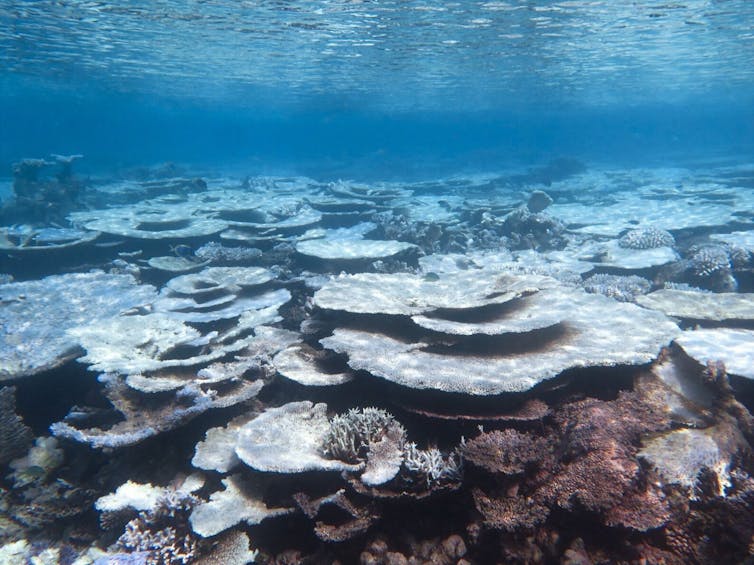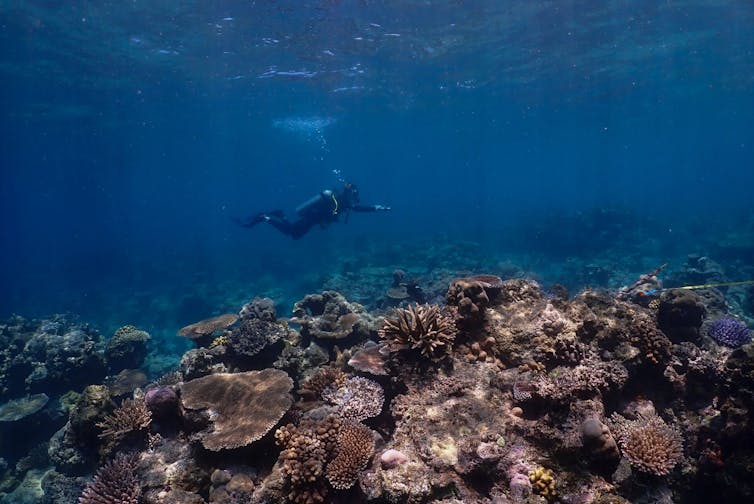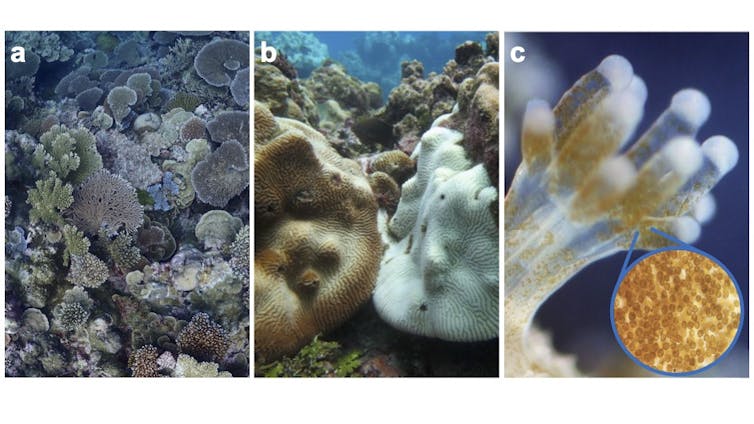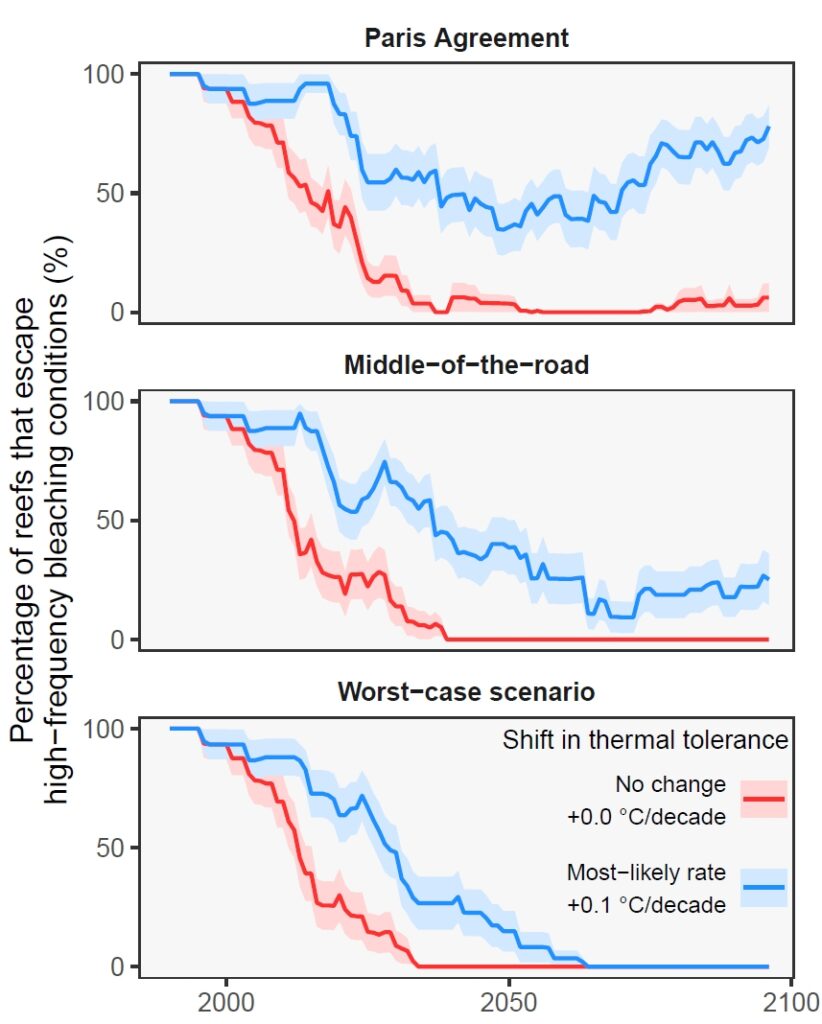Ecologist LIAM LACHS of Newcastle University and an international scientific team have produced a new study examining the reefs of Micronesian diving destination Palau, and he is hoping that its corals can continue to avoid severe marine heatwaves – whether by nature or by luck
Unprecedented ocean temperatures are triggering mass coral bleaching events across the world. This year, the world’s third largest barrier reef, in Florida, is already being hit hard.
New research by my colleagues and I offers a glimmer of hope: coral reefs we studied in the Pacific appear to have increased their resistance to high ocean temperatures. But this can only improve their long-term futures if there is strong global action on reducing carbon emissions.
We know that corals will need to withstand rising ocean temperatures to survive under climate change. And we know reef-building corals are acutely sensitive to even small increases in temperature. What we don’t yet know is whether their “thermal tolerance” – essentially their ability to handle high temperatures – can keep pace with ocean warming.
In normal conditions, corals live in symbiosis with microscopic algae housed within their tissue. These algae give corals their beautiful colours, and provide them with food through photosynthesis, just like plants (corals are animals, don’t forget).
However, this relationship breaks down when it’s too hot: the microalgae are expelled, leaving the corals stark white, or bleached, which usually leads to death. Extreme temperatures can even kill corals outright, bypassing the gradual bleaching process.

In our new study published in Nature Communications on the coral reefs of Palau, a nation of more than 300 small islands in the western Pacific Ocean, we found that the tolerance of corals to warm conditions has likely increased over the past three decades.
Testing thermal tolerance
Palau experienced intense marine heatwaves in 1998, 2010 and 2017 but, interestingly, each successive event led to less coral bleaching. Such a phenomenon has also been recorded in Australia’s Great Barrier Reef, south-east Asia, and French Polynesia.
Is this evidence that coral communities are adapting to hotter temperatures? We set out to test whether thermal tolerance has likely increased for at least those reefs in Palau and, if so, how quickly.
Our international team of researchers designed a simulation study, drawing on 35 years of sea surface temperature data and historic observations of bleaching. We found that the thermal tolerance of the coral communities in Palau has likely increased at 0.1°C/decade.
That’s slightly less than the increase in global temperatures (about 0.18°C/decade) but does suggest that these coral reefs have an innate capacity for climate resilience.

How coral reefs are adapting to warmer oceans
More work is needed to pin down exactly what has happened, but there are various mechanisms that could explain this.
One involves the turnover of species. There are hundreds of different coral species, each with a unique evolutionary history and life strategy. Some, like branching Acropora, are fast-growing yet sensitive to temperature, while others, like massive Porites, are slow-growing but more stress-tolerant.
Severe heatwaves can weed out the sensitive species, leaving the coral reef dominated by the tougher ones, which can compromise important ecological functions like reef growth and habitat provision for seafood species.
The second mechanism is genetic adaptation. Thermal tolerance is a complex trait that is likely influenced by thousands of genes, but most corals have only some of these.
Following Darwin’s theory of survival of the fittest, natural selection can choose the winners under climate change. Over multiple generations and many rounds of selection, thermal tolerance genes can become more prevalent, and thus increase the thermal tolerance of species populations.
The final explanation involves individual acclimatisation. Even within the lifetime of a single coral, its ability to survive thermal stress events can change. As the saying goes, “what doesn’t kill you makes you stronger”, and so, being exposed to low-level thermal stress can later improve chances of survival under high-level thermal stress.

To make things more complicated, all of these processes – species-turnover, genetic adaptation and acclimatisation – can also occur in the microalgae communities living within each coral. Scientists like me will need to disentangle the mechanisms that have driven potential shifts in thermal tolerance in Palau and elsewhere.
What does the future hold?
Can coral thermal tolerance continue increasing into the future? If so, then will it be fast enough to keep pace with ocean warming? Our study tackles these questions using high-resolution future temperature projections from 17 global climate models.

Projections of coral bleaching in Palau: if the Paris Agreement is achieved, in a middle-of-the-road scenario, and a worst-case scenario. An increase in thermal tolerance (blue line) buys some time, but coral reefs will still struggle unless climate change is halted (Lachs et al, author provided)
Our analysis reaffirms the scientific consensus, that ultimately the future of coral reefs depends on rapidly reducing carbon emissions. However, if coral thermal tolerance can continue rising, then bleaching could be avoided on some reefs, or at least delayed.
Our study and others have identified reefs with some level of innate climate resilience. This might buy us some time, but securing a future for coral reefs still hinges on rapid climate action. As our oceans get hotter, fewer reefs will escape bleaching conditions.
There are promising conservation measures, restoration efforts and more experimental interventions such as selective breeding to increase thermal tolerance. All of these might help corals persist into the future, but reducing carbon emissions is ultimately the only sure bet.
LIAM LACHS is a PhD Candidate in Climate Change Ecology and Evolution at Newcastle University. This article is republished from The Conversation under a Creative Commons licence. Read the original article.
Also on Divernet: Palau enforces chemical sunscreen ban, Palau sets another example on coral protection, Be The Champ! – Palau, Palau’s Jellyfish Lake reopens

